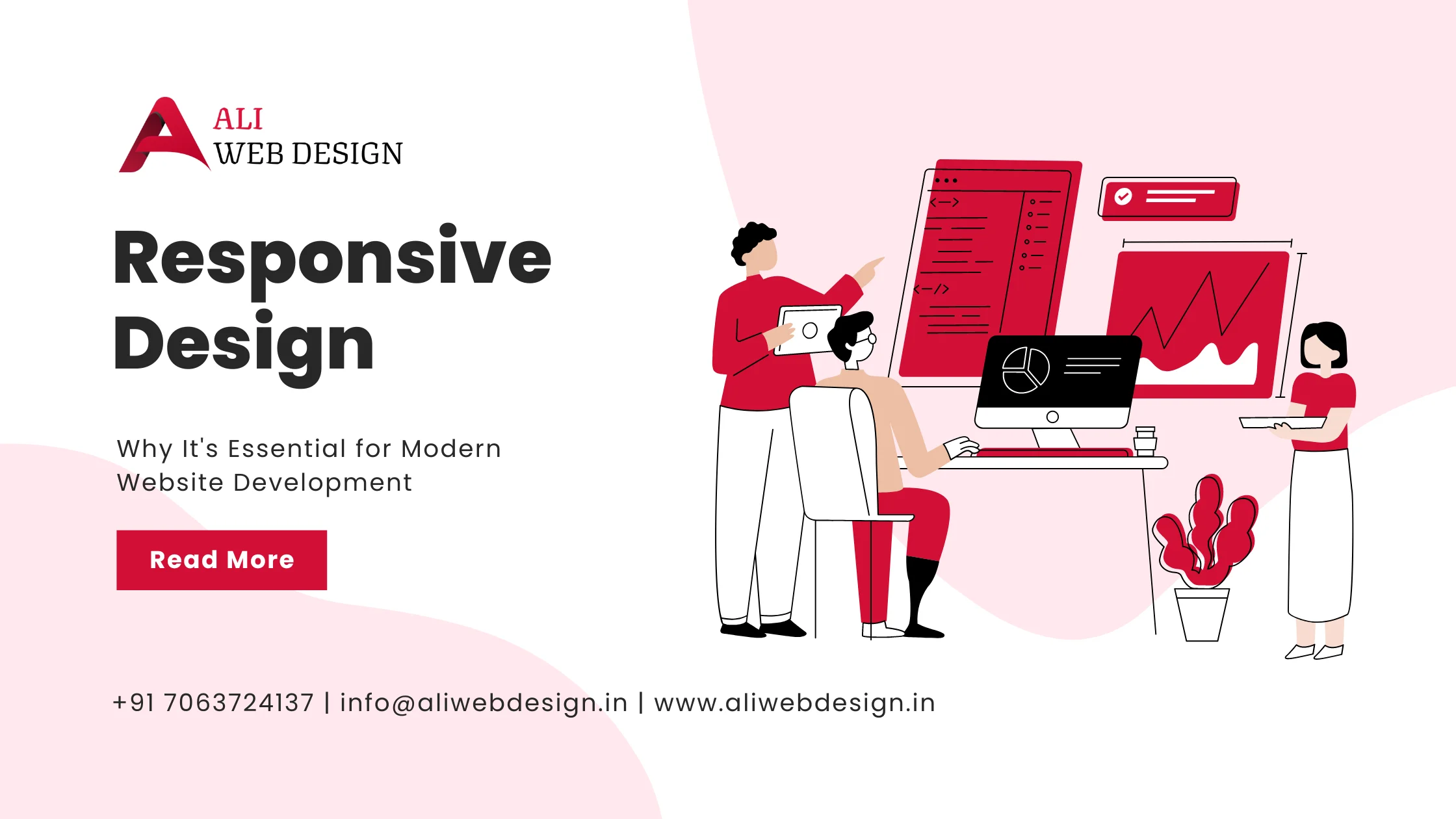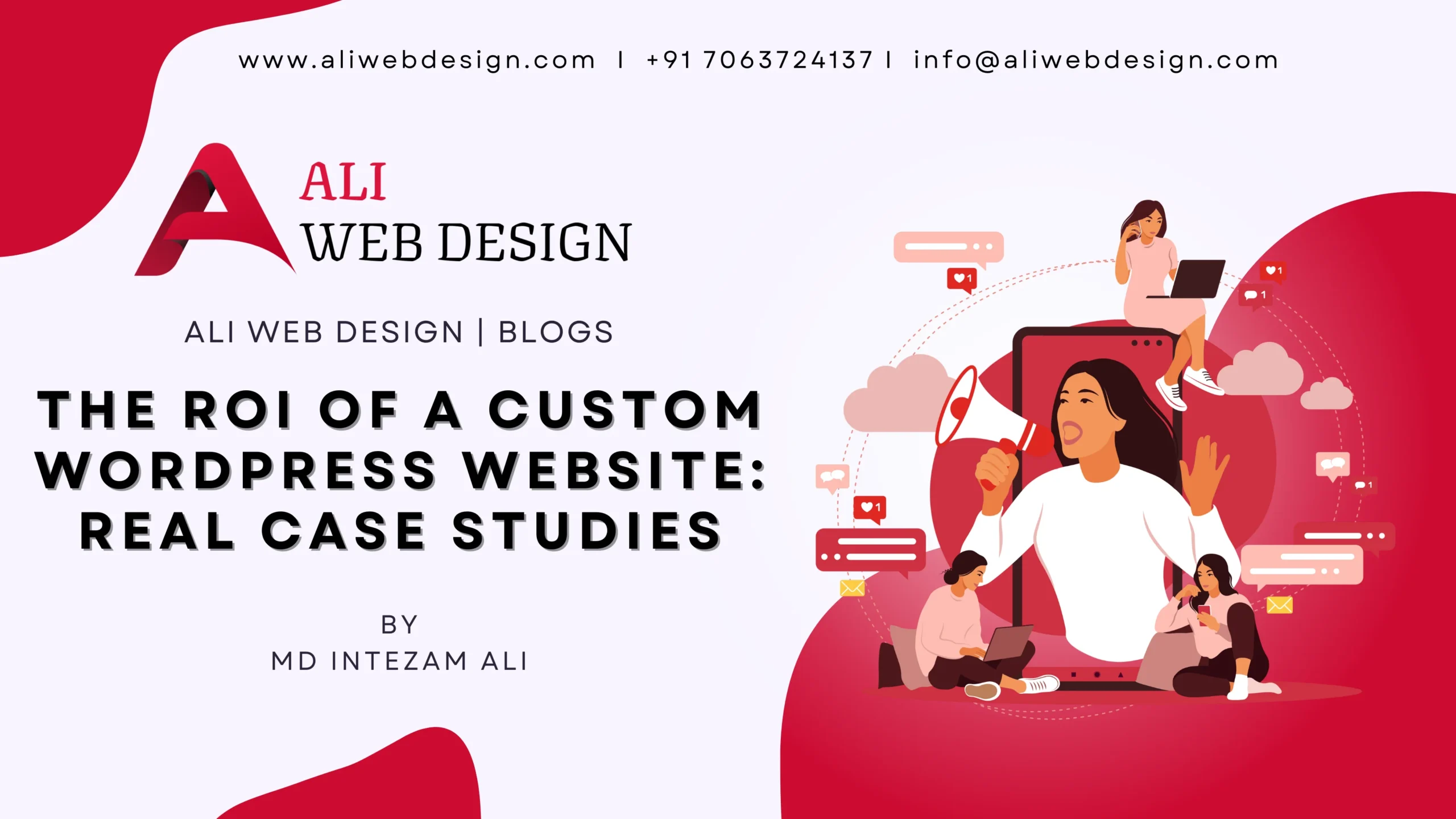Introduction
In today’s digital age, having a website that adapts seamlessly to different devices is not just a luxury; it’s a necessity. This is where responsive design comes into play. Responsive design is a web development approach that ensures a website looks and functions well on all devices, from desktops to smartphones. It’s essential in modern web development because it enhances user experience, boosts SEO rankings, and provides a cost-effective solution for businesses.
History of Web Design
- Early Web Design Techniques : Back in the early days of the internet, websites were static and built using basic HTML. They were designed for desktop monitors and didn’t adapt to different screen sizes. As mobile internet usage grew, this static approach became problematic.
- The Evolution to Responsive Design : With the proliferation of smartphones and tablets, web developers needed a way to ensure websites were accessible and functional on any device. This led to the birth of responsive design in the early 2010s. It marked a significant shift from creating multiple versions of a website for different devices to a single, adaptable site.
What is Responsive Design?
- Key Principles : Responsive design is built on three main principles: fluid grids, flexible images, and media queries. These elements work together to create a website that adjusts its layout and content to fit any screen size.
- How It Works : Using CSS media queries, responsive design detects the device’s screen size and orientation, then adjusts the layout accordingly. This might involve resizing images, reflowing text, and modifying navigation to ensure everything is accessible and readable.
Benefits of Responsive Design
- Improved User Experience : A responsive website provides a consistent and enjoyable experience for users, no matter what device they’re using. This leads to longer visit durations and lower bounce rates, which are critical for retaining visitors and encouraging conversions.
- Cost-Effectiveness : Instead of creating and maintaining separate websites for desktop and mobile, responsive design allows you to manage one site that works on all devices. This reduces development and maintenance costs.
- SEO Advantages : Google recommends responsive design as it makes it easier for search engines to crawl and index content. Responsive sites also tend to perform better in search rankings, especially with Google’s mobile-first indexing approach.
Core Elements of Responsive Design
- Fluid Grids : Fluid grids use relative units like percentages instead of fixed units like pixels to define widths. This allows the layout to scale proportionally to the screen size.
- Flexible Images : Images in responsive design are set to a maximum width of 100% to ensure they scale within their containing elements. This prevents images from overflowing or being too small.
- Media Queries : Media queries are a CSS feature that allows the application of styles based on the characteristics of the device, such as its width, height, and orientation. This ensures the right styles are applied to the right devices.
Responsive vs. Adaptive Design
- Differences : Responsive design uses fluid grids and media queries to adapt to any screen size, while adaptive design creates multiple fixed layouts for different devices. Each approach has its own advantages and drawbacks.
- Pros and Cons : Responsive design is more flexible and future-proof but can be complex to implement. Adaptive design can be easier to create for specific devices but might require more maintenance as new devices emerge.
Implementing Responsive Design
- Tools and Frameworks : There are numerous tools and frameworks available to help implement responsive design, such as Bootstrap, Foundation, and CSS Grid Layout. These tools provide pre-designed components and styles that simplify the development process.
- Best Practices : Some best practices for responsive design include designing with a mobile-first approach, optimizing images for different devices, and regularly testing the site on various screen sizes.
Common Challenges in Responsive Design
- Device Compatibility : Ensuring compatibility across all devices can be challenging. It requires thorough testing and a keen understanding of different device capabilities and limitations.
- Performance Issues : Responsive sites can sometimes suffer from performance issues if not optimized correctly. This includes slow loading times due to large images or complex layouts. Using techniques like lazy loading and optimizing CSS and JavaScript can help mitigate these issues.
Case Studies of Successful Responsive Websites
- Examples and Analysis : Examining successful responsive websites like Starbucks, Dropbox, and GitHub can provide valuable insights into effective design strategies. These sites manage to deliver excellent user experiences across all devices, showcasing the power of responsive design.
- Lessons Learned : From these examples, it’s clear that focusing on user experience, maintaining simplicity, and ensuring fast load times are crucial elements of a successful responsive website.
Future of Responsive Design
- Emerging Trends : The future of responsive design is likely to see more advancements in technologies like CSS Grid, variable fonts, and progressive web apps (PWAs). These innovations will further enhance the flexibility and functionality of responsive sites.
- Technological Advances : As new devices and screen sizes emerge, responsive design will continue to evolve. Keeping up with technological advances and adopting new standards will be essential for staying relevant in web development.
Impact on Business and Marketing
- Increased Reach : Responsive design ensures that your website is accessible to a broader audience, regardless of the device they’re using. This can significantly increase your reach and potential customer base.
- Enhanced Engagement : A well-designed responsive website engages users by providing a seamless experience, leading to higher engagement rates and better customer retention.
SEO and Responsive Design
- Google’s Mobile-First Index : Google’s shift to mobile-first indexing means that the mobile version of your website is considered the primary version. Responsive design helps ensure that your site performs well under this indexing system.
- How Responsive Design Affects Rankings : Responsive design can positively impact your search engine rankings by improving user experience, reducing bounce rates, and ensuring fast load times, all of which are factors that search engines consider.
User Experience (UX) and Responsive Design
- Importance of UX : User experience is a critical component of any website. A responsive design ensures that users have a positive experience, which can lead to higher satisfaction and conversions.
- Designing for the User : Designing with the user in mind means considering their needs and behaviors across different devices. This involves creating intuitive navigation, readable text, and interactive elements that work seamlessly on any screen.
Testing Your Responsive Design
- Tools and Techniques : Testing is a crucial step in responsive design. Tools like Google’s Mobile-Friendly Test, BrowserStack, and responsive design mode in browsers can help identify and fix issues.
- Continuous Improvement : Responsive design is not a one-time task. Continuously testing and updating your site ensures it remains functional and user-friendly as new devices and technologies emerge.
Conclusion
Responsive design is no longer optional in modern web development; it’s essential. By creating websites that adapt to any device, businesses can enhance user experience, improve SEO, and reduce costs. As technology continues to evolve, staying ahead of the curve with responsive design practices will be crucial for success.
FAQs
Responsive design uses fluid grids and media queries to adjust the layout to any screen size, while adaptive design creates fixed layouts for specific devices.
Responsive design can improve SEO by enhancing user experience, reducing bounce rates, and ensuring fast load times, all of which are important ranking factors for search engines.
Common tools include Bootstrap, Foundation, and CSS Grid Layout. These frameworks provide pre-designed components and styles to simplify the development process.
Yes, responsive design significantly improves user experience by ensuring websites are accessible and functional on all devices, leading to higher engagement and satisfaction.
Future trends include advancements in CSS Grid, variable fonts, and progressive web apps (PWAs), which will further enhance the flexibility and functionality of responsive sites.
For any Web Development projects, Contact Us










